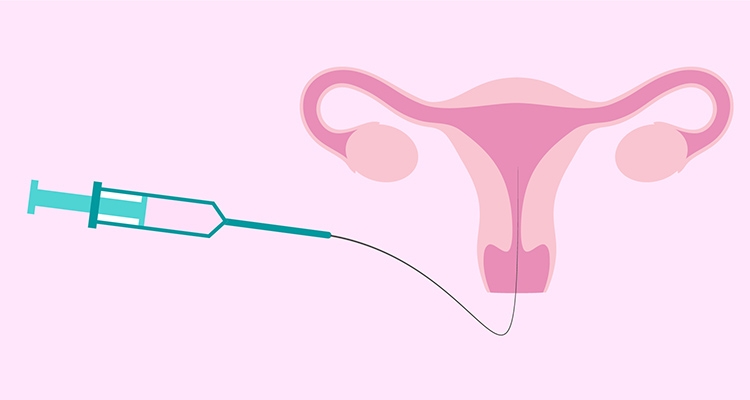Intrauterine insemination (IUI)
This is a technique in which sperm is inserted into the woman’s uterus using a special thin catheter, which has been processed in advance in the laboratory in order to increase the potential of the sperm. In this way, the distance separating the sperm and the egg is shortened and the fertilization process is facilitated.
Insemination with a partner’s sperm is suitable for:
- Young women with pierced trumpets
- Couples whose reasons for infertility are unknown.
- Couples in which the woman has ovulation problems (e.g. polycystic ovary syndrome).
- Couples in which the partner has mild to moderate problems with sperm quality, concentration or motility.
Insemination with donor sperm is suitable for:
- Men with poor sperm quality or no sperm.
- Men who are carriers of a genetic disease that cannot be detected in embryos.
- Women who do not have a partner.
Is insemination done with or without medication?
Insemination can be performed in a natural cycle, i.e. without medication, or after inducing follicular development with medication. Usually, pharmacological ovarian stimulation is chosen in women who have an irregular cycle, such as in polycystic ovary syndrome.
Monitoring is done with a series of ultrasounds and blood tests to determine hormone levels.
When the follicles have reached a satisfactory size and number, insemination is performed approximately 36 hours after the administration of an injection of chorionic gonadotropin, which causes the maturation of the eggs and ovulation.
What is the sperm preparation process?
The partner provides sperm shortly before the scheduled time of insemination (approximately 1-2 hours before). In cases of sperm donation, the donor’s sperm is stored in the sperm bank and thawed 1-2 hours before insemination.
Sperm processing includes centrifugation in layers of different densities and then washing in a special selection culture medium with the aim of concentrating spermatozoa with the best mobility and separating them from the seminal fluid.
Seminal fluid contains leukocytes, immature germ cells and oxygen free radicals that can cause DNA fragmentation, resulting in low fertilizing capacity. Thus, after processing the sperm in the laboratory, the quality of the sample to be used for insemination is better.
Success rates
The pregnancy rates achieved with insemination are relatively low ( 10-15% per cycle) of course it depends on many factors (age of the woman, quality and number of sperm, etc.). This means that to achieve pregnancy it may take several attempts. Of course, this particular technique has the advantage of being clearly less invasive than in vitro fertilization and therefore has a lower cost.
However, if the woman is over 40 years old or has a low egg reserve (low AMH), then the success rate after insemination is significantly reduced. At older ages, in vitro fertilization is the appropriate method to maximize the likelihood of achieving pregnancy.



